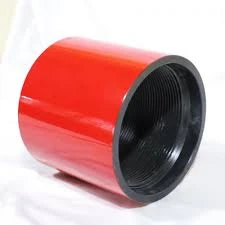- Afrikaans
- Albanian
- Amharic
- Arabic
- Armenian
- Azerbaijani
- Basque
- Belarusian
- Bengali
- Bosnian
- Bulgarian
- Catalan
- Cebuano
- Corsican
- Croatian
- Czech
- Danish
- Dutch
- English
- Esperanto
- Estonian
- Finnish
- French
- Frisian
- Galician
- Georgian
- German
- Greek
- Gujarati
- Haitian Creole
- hausa
- hawaiian
- Hebrew
- Hindi
- Miao
- Hungarian
- Icelandic
- igbo
- Indonesian
- irish
- Italian
- Japanese
- Javanese
- Kannada
- kazakh
- Khmer
- Rwandese
- Korean
- Kurdish
- Kyrgyz
- Lao
- Latin
- Latvian
- Lithuanian
- Luxembourgish
- Macedonian
- Malgashi
- Malay
- Malayalam
- Maltese
- Maori
- Marathi
- Mongolian
- Myanmar
- Nepali
- Norwegian
- Norwegian
- Occitan
- Pashto
- Persian
- Polish
- Portuguese
- Punjabi
- Romanian
- Russian
- Samoan
- Scottish Gaelic
- Serbian
- Sesotho
- Shona
- Sindhi
- Sinhala
- Slovak
- Slovenian
- Somali
- Spanish
- Sundanese
- Swahili
- Swedish
- Tagalog
- Tajik
- Tamil
- Tatar
- Telugu
- Thai
- Turkish
- Turkmen
- Ukrainian
- Urdu
- Uighur
- Uzbek
- Vietnamese
- Welsh
- Bantu
- Yiddish
- Yoruba
- Zulu
tubing crossover
Understanding Tubing Crossovers Enhancing Oil and Gas Operations
In the oil and gas industry, efficient and reliable equipment is critical to the successful extraction and management of natural resources. One of the essential components in this sector is the tubing crossover. This piece of equipment plays a vital role in transitioning operations between different types of piping or tubing, particularly when dealing with various well conditions or equipment configurations.
A tubing crossover acts as a connector that enables seamless flow between different sizes or types of tubing. This is particularly crucial in situations where mismatched equipment could lead to leaks, pressure losses, or even catastrophic failures. It is often employed in contexts where production tubing must connect to other tubular items or where injecting fluids into the well requires a specialized setup. By facilitating these transitions smoothly, crossovers help maintain the integrity and efficiency of oil and gas operations.
Typically manufactured from high-quality materials such as carbon steel, stainless steel, or alloyed metals, tubing crossovers are designed to withstand the harsh conditions present in drilling environments
. These materials are chosen for their strength and resistance to corrosion, which is vital given the abrasive nature of fluids and gases encountered during extraction processes. Additionally, the design of the crossover must consider factors like pressure rating, temperature fluctuations, and potential chemical exposure, making engineering precision a prerequisite for ensuring reliability.tubing crossover

The versatility of tubing crossovers is one of their key advantages. They come in various configurations and sizes, accommodating the specific needs of different projects. For example, operators can select crossovers with threading or welded connections, depending on their installation preferences and the existing equipment’s specifications. Such adaptability not only streamlines operations but also minimizes downtime, which is a significant cost factor in the industry.
Regular maintenance and inspections are crucial for tubing crossovers to ensure their longevity and performance. Over time, wear and tear can compromise their integrity, leading to leaks or joint failures. Proper monitoring and timely replacements can mitigate these risks, thus safeguarding both the environment and the economic interests of oil and gas companies.
In recent years, advancements in technology have prompted the development of more sophisticated tubing crossovers. Innovations such as improved sealing technologies and enhanced materials have increased their durability and effectiveness. As the industry moves forward, the demand for reliable and efficient equipment will continue to rise, making the role of tubing crossovers even more critical.
In conclusion, tubing crossovers are an indispensable component in the oil and gas sector, facilitating efficient transitions between different tubing systems while ensuring operational safety and performance. Their importance cannot be overstated, as they play a key role in sustaining production levels and minimizing environmental impact. With ongoing advancements in their design and materials, tubing crossovers will undoubtedly remain a focal point in enhancing the efficacy of oil and gas operations for years to come.
-
Tubing Pup Joints: Essential Components for Oil and Gas OperationsNewsJul.10,2025
-
Pup Joints: Essential Components for Reliable Drilling OperationsNewsJul.10,2025
-
Pipe Couplings: Connecting Your World EfficientlyNewsJul.10,2025
-
Mastering Oilfield Operations with Quality Tubing and CasingNewsJul.10,2025
-
High-Quality Casing Couplings for Every NeedNewsJul.10,2025
-
Boost Your Drilling Efficiency with Premium Crossover Tools & Seating NipplesNewsJul.10,2025







